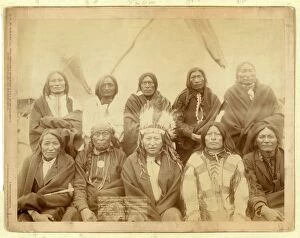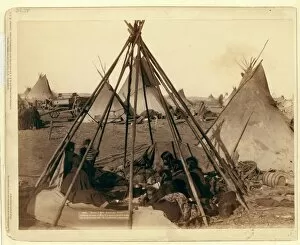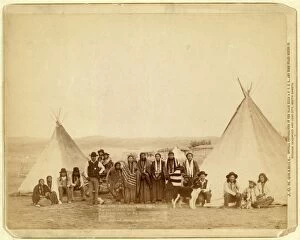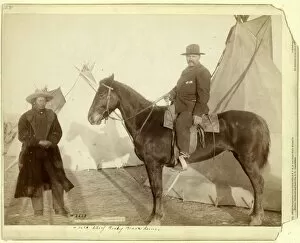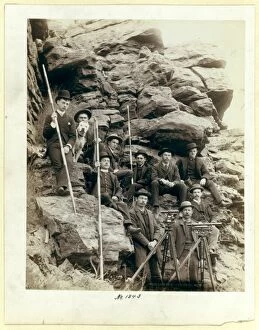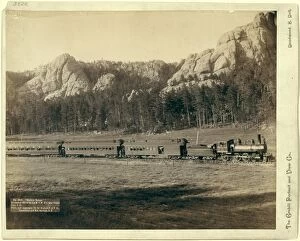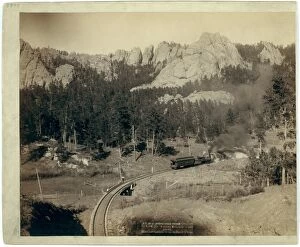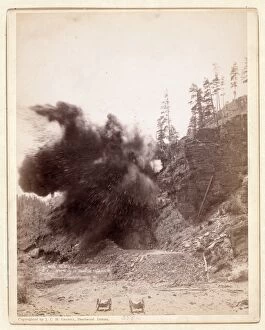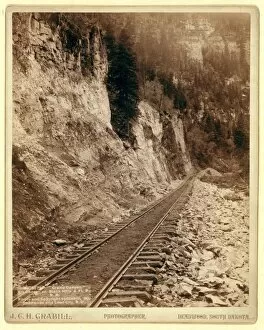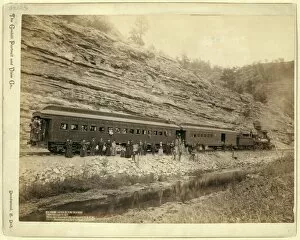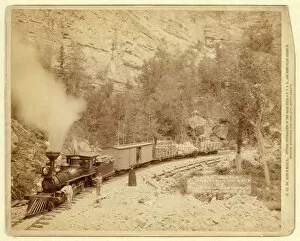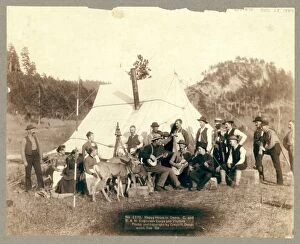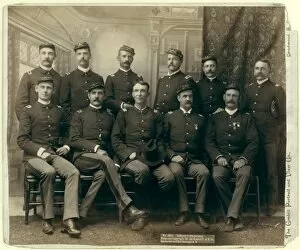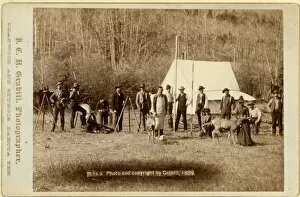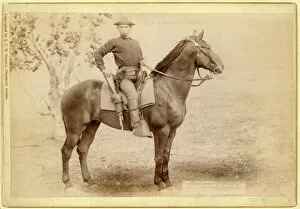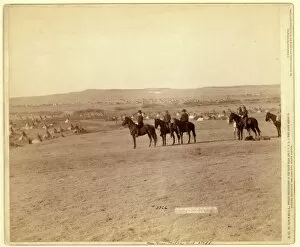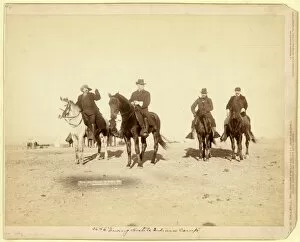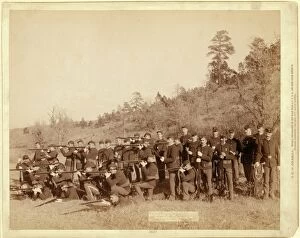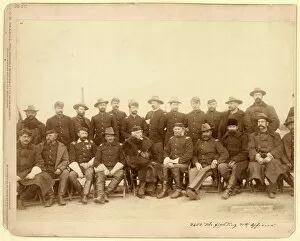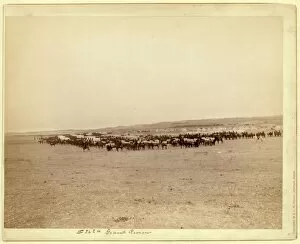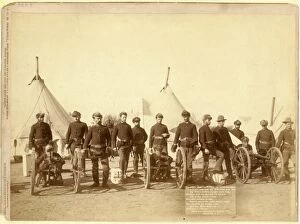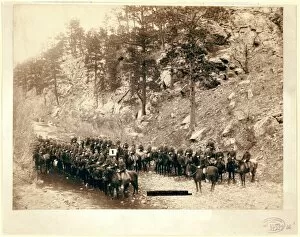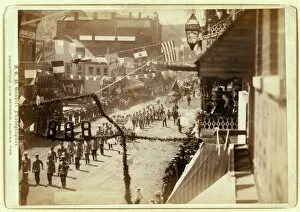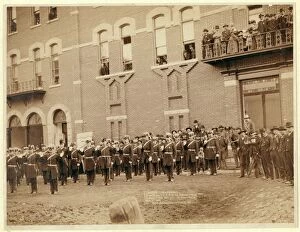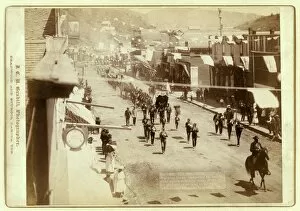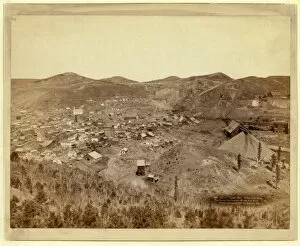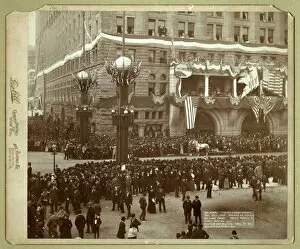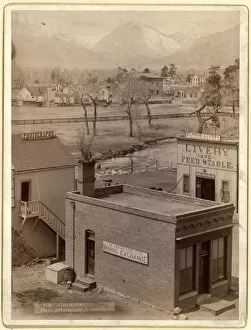Grabill Collection (#4)
"Capturing the Essence of History: John C. H
For sale as Licensed Images
Choose your image, Select your licence and Download the media
"Capturing the Essence of History: John C. H. Grabill's Glimpses into the Wild West" Step back in time to Sioux encampments, where Miniconjou Sioux Native Americans resided in their tipis on or near South Dakota's Pine Ridge Reservation. In 1891, photographer John C. H. Grabill immortalized this scene, offering a rare glimpse into their way of life. In another captivating photograph from c1888, we witness Ned Coy, a fearless cowboy from South Dakota, skillfully taming his bucking bronco named Boy Dick. This snapshot showcases the daring spirit and resilience that defined these cowboys. Traveling further west to Wyoming, Grabill captures the majestic Devil's Tower rising against the sky in Hullett. The sheer grandeur of this natural wonder is beautifully preserved through his lens. Continuing our journey through time and space with Grabill as our guide, we encounter an American cowboy astride his trusty steed—a powerful representation of the frontier spirit that shaped America during this era. It also documents Corporal Paul Weinert alongside artillerymen and scouts in 1891—an image that pays homage to those who served bravely during challenging times. Cheyenne chiefs Standing Elk and Running Hog take center stage in another striking portrait by Grabill from 1887. Their traditional headdresses symbolize both cultural pride and resistance against adversity. Shifting gears slightly towards youth culture amidst Western expansion, three Lakota Sioux teenage boys donning western attire sit beneath a tree—bridging two worlds with their unique sense of style. Pine Ridge Reservation comes alive before our eyes as Lakota Sioux chiefs stand proudly alongside white U. S officials such as Buffalo Bill Cody himself. This historic gathering signifies both collaboration and tension between cultures at a pivotal moment in history. Buffalo Bill Cody returns once more as he surveys a hostile Indian camp—an iconic figure whose Wild West shows brought the frontier to life for audiences worldwide.



